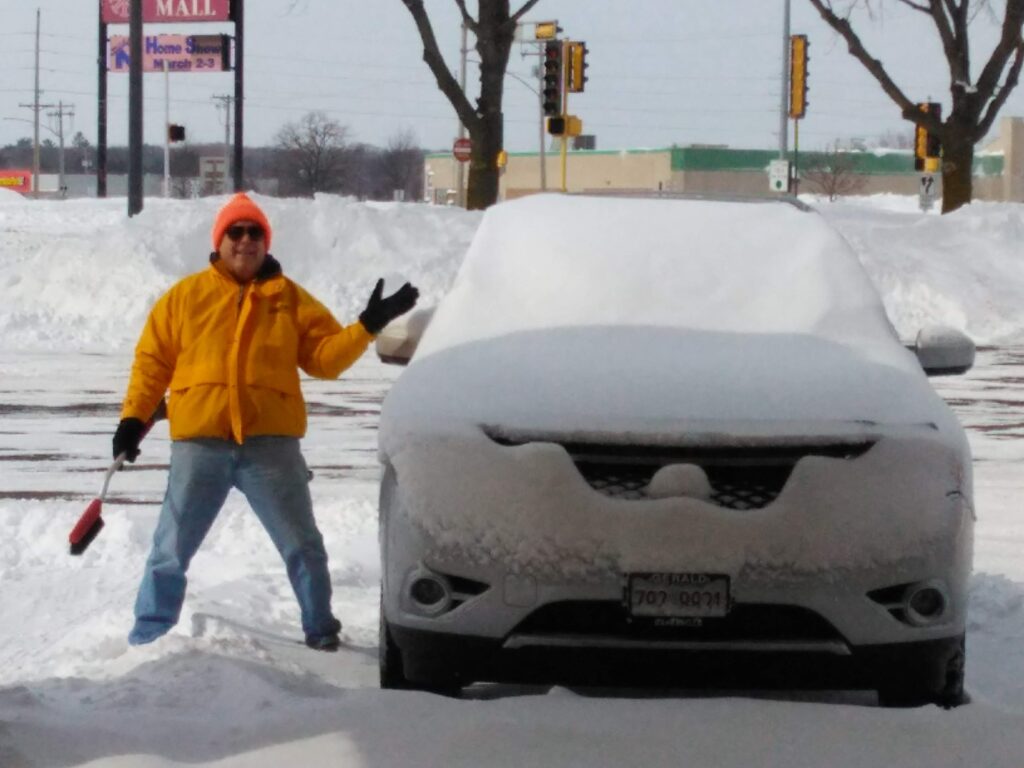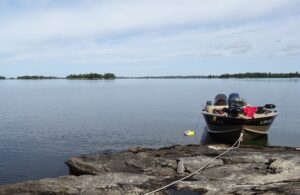Since I live in the Midwest – and winter temperatures can vary widely here – my age and experience have added greatly to what I have learned, over the years, about batteries.
As an avid fisherman and boater with over 50 years on the water, I have learned much about the care and maintenance of my boat; from tires and tire pressure to batteries and chargers… and everything in-between.
But one quickly learns that, even as one grows older, the learning never stops. Nor should it. Knowledge of batteries is no exception, even as the type and use of batteries continues to evolve.
This page may contain affiliate links, which means I may earn a small commission if you click through and make a purchase. Read our Affiliate Disclosure.
Winter Temperatures are the Culprit
So let me share a few additional thoughts with you. It’s a result of what has been one of the most extreme of winters in quite some time here in the Midwest. Yesterday, for example, it was 24 degrees Fahrenheit below zero, and the wind chill was just shy of minus 50!

It doesn’t have a marine battery, but my 2 ½ year-old Nissan Pathfinder not only failed to start the car, it failed altogether… as in dead battery! That battery should have been good for at least 5-6 years. What happened?
In much the same way that extremely high temperatures in the summer months can play havoc with a battery, extremely low temperatures in the cold months can wreak the same havoc on batteries, damaging – if not totally destroying them.
Battery Construction
Marine & RV batteries are only a tad bit different from car batteries; if they are of the same lead-acid variety though, the same risks are prevalent. Why? Because even though improvements are constantly being implemented, lead-acid batteries have changed little since the 1880s.
Marine and RV batteries are generally constructed of several single cells, each producing about 2.1 volts, that are connected in series. A 12-volt battery has 6 single cells connected in series, producing a battery that has a fully charged output voltage of 12.6 volts. This results from flat lead plates that are immersed in a pool of sulfuric acid (aka electrolyte).
Adding water regularly is required for most types of lead-acid batteries in order for them to function properly and remain “healthy”. Keep in mind that these are simply “storage” batteries because they store energy that is transferred to them; it doesn’t last, and the batteries are not capable of making their own.
But let’s talk boats here!
Yep, we will, and I’ll get to that shortly. Here’s the thing. A fully-charged battery (having received energy from another source – say, a charger), when connected, creates a chemical reaction that produces the electricity necessary to do things like start your outboard engine.
That same reaction also produces a substance called lead sulfate, which begins to coat the lead plates in the battery. The process is called sulfation, and is normal during the process of battery discharge. With continued discharge however, the increasing sulfation leads to decreased voltage in the battery, down from the initial 12.6 volts. This results in decreasing ability to produce the “push” of current – amps – out of the battery and into things like the starter on your motor.
Fortunately for us, the lead sulfate can be reconverted back into lead and sulfuric acid, but only if the discharged battery is immediately connected to a battery charger. If that battery is not immediately recharged, the lead sulfate begins to form a type of hard crystals, which cannot be easily reconverted. It can also quickly lead to the demise of the battery.
Can we skip the chemistry lesson, please?
In a relatively wide range of temperatures, their capacity drops about 20% below normal in freezing weather (hot weather can be even more problematical). It can drop to about 50% of normal capacity when temperatures drop below about minus 20 degrees Fahrenheit. At 40% of normal capacity, it is possible a battery can freeze solid, destroying it. The resulting acid that eventually leaks out won’t do much good for your boat, either.
Half of the lesson here is to never let a battery discharge below 80% – at most – of its capacity, or approximately 10.5 volts. The other half is to make certain that, if your battery is not a “factory-sealed” unit, make certain to keep it topped off, on a regular basis, with distilled water. Make certain to always keep it fully charged.
Finally, to the point: keeping a battery healthy
Let’s get directly to the final point. Since we don’t use our boats in the winter – at least not in the upper Midwest where we can encounter frozen water for 5-6 months. During the time our boats have been safely stored away, we tend to forget about the batteries that supply the energy for the fun we enjoy in the warmer months. A weak/seriously under-charged battery can begin to freeze at 32 degrees Fahrenheit, whereas a fully charged battery won’t freeze until the temperature is -80 or more below.
Two questions come immediately to mind:
- Where is your boat stored?
- Is your battery stored in the boat?
All batteries will self-discharge, the rate of which depends upon how/where they are stored, and the temperature there.
Let’s assume your battery is rated at 125 Ampere Hours (forgetting for a moment the CCA or Cold Cranking Amps rating). It will self-discharge at a rate of approximately 5 amps per week. Whether stored in the boat or outside of it, if the battery goes into storage on say, November 1, by the end of February – after about 16 weeks without charging, the battery will have lost approximately 80 amps of its 125-amp capacity.
It will now be at less than 40% of its capacity: less than 6 volts! And, although you can’t see it, the battery will have experienced severe sulfation and a vastly reduced life… or perhaps even rendered useless.
At the present cost of new batteries, might it not be worthwhile to clean and add distilled water to your batteries in the fall and connect them to a charger with “Intelligent charging” capabilities over the winter months? Want to keep your batteries healthy? Here’s a link to another article, this one about battery chargers.








